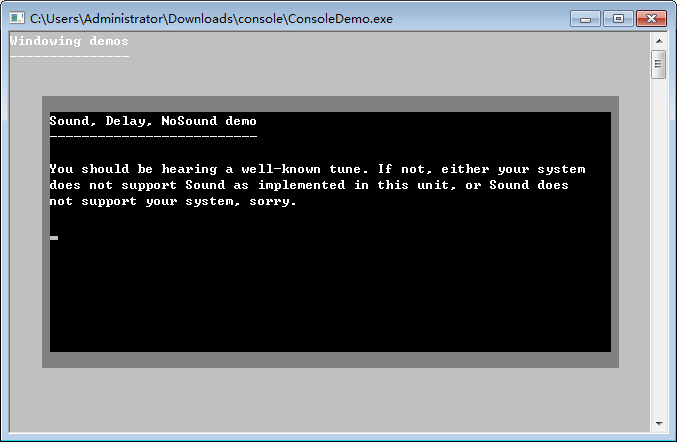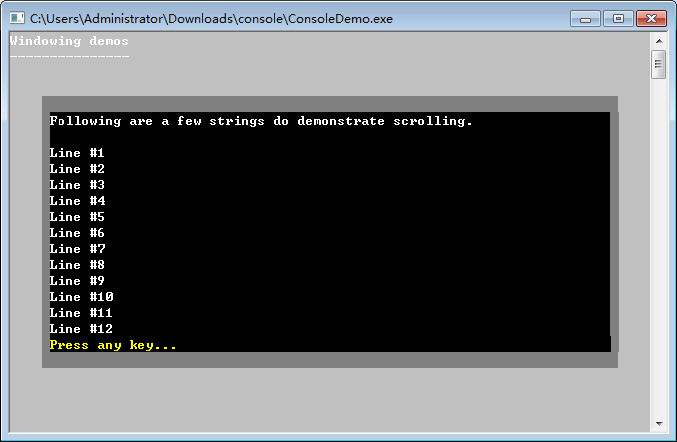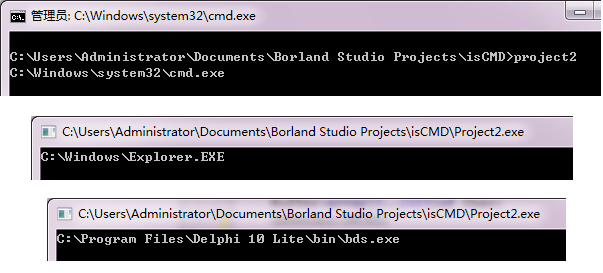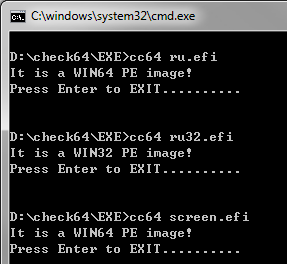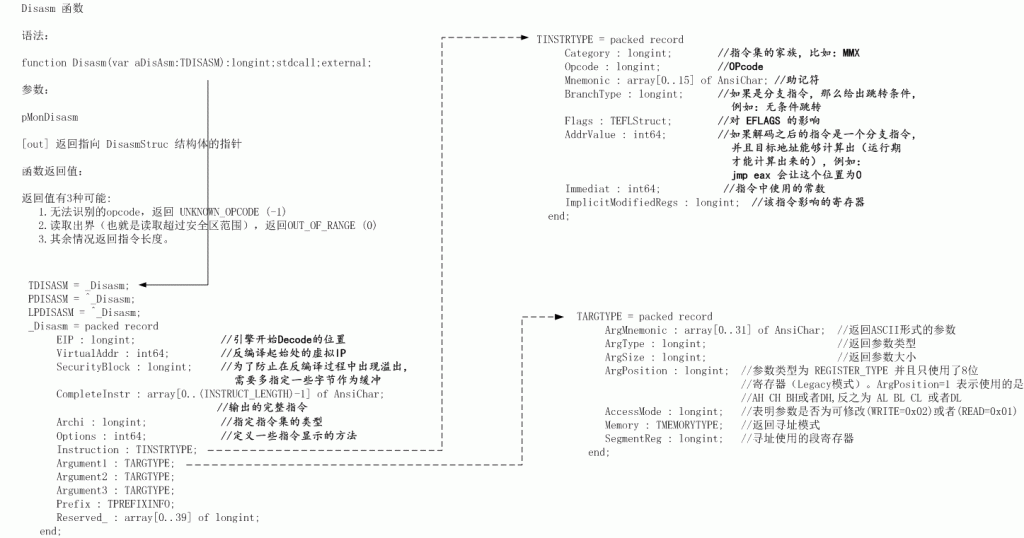根据 http://delphi.cjcsoft.net/viewthread.php?tid=48860 文章内容,将类似 \\?\USB#Vid_4146&Pid_d2b5#0005050400044#{a5dcbf10-6530-11d2-901f-00c04fb951ed} 转化为更易读的类型,例如
USB Inserted
Device Type = USB Mass Storage Device
Driver Name = Disk drive
Friendly Name = I0MEGA UMni1GB*IOM2J4 USB Device
之前《关于监视插入U盘的问题(1)》中给出了接收 WM_DEVICECHANGE 消息的方法。从资料中可以看出,直接处理这个消息能够获得当前系统发生变化的盘符,但是无法处理未产生盘符变化(未分区或者其他USB设备)。对于这样的问题,可以使用RegisterDeviceNotification来向系统注册一个回调函数,并且设置好只通知USB设备变化,通过这样的方法能够取得发生变化的USB设备的信息,之后再通过查询注册表对照出更易读的信息。
文章还指出这样的转换是通过读取注册表来完成的。
我编写了如下例子,实践证明这个程序工作很好。除了普通的U盘,我还地尝试了一个 USB2UART 的 Cable,可以看出工作正常。
测试环境为 Win7+Delphi10,不需要管理员权限运行程序即可。
unit Unit1;
interface
uses
Windows, Messages, SysUtils, Variants, Classes, Graphics, Controls, Forms,
Dialogs,MahUSB;
type
TForm1 = class(TForm)
procedure FormShow(Sender: TObject);
procedure FormClose(Sender: TObject; var Action: TCloseAction);
private
{ Private declarations }
FUsb : TUsbClass;
procedure UsbIN(ASender : TObject; const ADevType,ADriverName,
AFriendlyName : string);
procedure UsbOUT(ASender : TObject; const ADevType,ADriverName,
AFriendlyName : string);
public
{ Public declarations }
end;
var
Form1: TForm1;
implementation
{$R *.dfm}
procedure TForm1.FormClose(Sender: TObject; var Action: TCloseAction);
begin
FreeAndNil(FUsb);
end;
procedure TForm1.FormShow(Sender: TObject);
begin
FUsb := TUsbClass.Create;
FUsb.OnUsbInsertion := UsbIN;
FUsb.OnUsbRemoval := UsbOUT;
end;
procedure TForm1.UsbIN(ASender : TObject; const ADevType,ADriverName,
AFriendlyName : string);
begin
showmessage('USB Inserted - Device Type = ' + ADevType + #13#10 +
'Driver Name = ' + ADriverName + #13+#10 +
'Friendly Name = ' + AFriendlyName);
end;
procedure TForm1.UsbOUT(ASender : TObject; const ADevType,ADriverName,
AFriendlyName : string);
begin
showmessage('USB Removed - Device Type = ' + ADevType + #13#10 +
'Driver Name = ' + ADriverName + #13+#10 +
'Friendly Name = ' + AFriendlyName);
end;
end.
============================================================================================
unit MahUSB;
interface
uses Windows, Messages, SysUtils, Classes, Registry, Masks;
type
{ Event Types }
TOnUsbChangeEvent = procedure(AObject : TObject;
const ADevType,ADriverName,
AFriendlyName : string) of object;
{ USB Class }
TUsbClass = class(TObject)
private
FHandle : HWND;
FOnUsbRemoval,
FOnUsbInsertion : TOnUsbChangeEvent;
procedure GetUsbInfo(const ADeviceString : string;
out ADevType,ADriverDesc,
AFriendlyName : string);
procedure WinMethod(var AMessage : TMessage);
procedure RegisterUsbHandler;
procedure WMDeviceChange(var AMessage : TMessage);
public
constructor Create;
destructor Destroy; override;
property OnUsbInsertion : TOnUsbChangeEvent read FOnUsbInsertion
write FOnUsbInsertion;
property OnUsbRemoval : TOnUsbChangeEvent read FOnUsbRemoval
write FOnUsbRemoval;
end;
// -----------------------------------------------------------------------------
implementation
type
// Win API Definitions
PDevBroadcastDeviceInterface = ^DEV_BROADCAST_DEVICEINTERFACE;
DEV_BROADCAST_DEVICEINTERFACE = record
dbcc_size : DWORD;
dbcc_devicetype : DWORD;
dbcc_reserved : DWORD;
dbcc_classguid : TGUID;
dbcc_name : char;
end;
const
// Miscellaneous
GUID_DEVINTF_USB_DEVICE : TGUID = '{A5DCBF10-6530-11D2-901F-00C04FB951ED}';
USB_INTERFACE = $00000005; // Device interface class
USB_INSERTION = $8000; // System detected a new device
USB_REMOVAL = $8004; // Device is gone
// Registry Keys
USBKEY = 'SYSTEM\CurrentControlSet\Enum\USB\%s\%s';
USBSTORKEY = 'SYSTEM\CurrentControlSet\Enum\USBSTOR';
SUBKEY1 = USBSTORKEY + '\%s';
SUBKEY2 = SUBKEY1 + '\%s';
constructor TUsbClass.Create;
begin
inherited Create;
FHandle := AllocateHWnd(WinMethod);
RegisterUsbHandler;
end;
destructor TUsbClass.Destroy;
begin
DeallocateHWnd(FHandle);
inherited Destroy;
end;
procedure TUsbClass.GetUsbInfo(const ADeviceString : string;
out ADevType,ADriverDesc,
AFriendlyName : string);
var sWork,sKey1,sKey2 : string;
oKeys,oSubKeys : TStringList;
oReg : TRegistry;
i,ii : integer;
bFound : boolean;
begin
ADevType := '';
ADriverDesc := '';
AFriendlyName := '';
if ADeviceString<>'' then begin
bFound := false;
oReg := TRegistry.Create;
oReg.RootKey := HKEY_LOCAL_MACHINE;
// Extract the portions of the string we need for registry. eg.
// \\?\USB#Vid_4146&Pid_d2b5#0005050400044#{a5dcbf10- ..... -54334fb951ed}
// We need sKey1='Vid_4146&Pid_d2b5' and sKey2='0005050400044'
sWork := copy(ADeviceString,pos('#',ADeviceString) + 1,1026);
sKey1 := copy(sWork,1,pos('#',sWork) - 1);
sWork := copy(sWork,pos('#',sWork) + 1,1026);
sKey2 := copy(sWork,1,pos('#',sWork) - 1);
// Get the Device type description from \USB key
if oReg.OpenKeyReadOnly(Format(USBKEY,[skey1,sKey2])) then begin
ADevType := oReg.ReadString('DeviceDesc');
oReg.CloseKey;
oKeys := TStringList.Create;
oSubKeys := TStringList.Create;
// Get list of keys in \USBSTOR and enumerate each key
// for a key that matches our sKey2='0005050400044'
// NOTE : The entry we are looking for normally has '&0'
// appended to it eg. '0005050400044&0'
if oReg.OpenKeyReadOnly(USBSTORKEY) then begin
oReg.GetKeyNames(oKeys);
oReg.CloseKey;
// Iterate through list to find our sKey2
for i := 0 to oKeys.Count - 1 do begin
if oReg.OpenKeyReadOnly(Format(SUBKEY1,[oKeys[i]])) then begin
oReg.GetKeyNames(oSubKeys);
oReg.CloseKey;
for ii := 0 to oSubKeys.Count - 1 do begin
if MatchesMask(oSubKeys[ii],sKey2 + '*') then begin
// Got a match?, get the actual desc and friendly name
if oReg.OpenKeyReadOnly(Format(SUBKEY2,[oKeys[i],
oSubKeys[ii]])) then begin
ADriverDesc := oReg.ReadString('DeviceDesc');
AFriendlyName := oReg.ReadString('FriendlyName');
oReg.CloseKey;
end;
bFound := true;
end;
end;
end;
if bFound then break;
end;
end;
FreeAndNil(oKeys);
FreeAndNil(oSubKeys);
end;
FreeAndNil(oReg);
end;
end;
procedure TUsbClass.WMDeviceChange(var AMessage : TMessage);
var iDevType : integer;
sDevString,sDevType,
sDriverName,sFriendlyName : string;
pData : PDevBroadcastDeviceInterface;
begin
if (AMessage.wParam = USB_INSERTION) or
(AMessage.wParam = USB_REMOVAL) then begin
pData := PDevBroadcastDeviceInterface(AMessage.LParam);
iDevType := pData^.dbcc_devicetype;
// Is it a USB Interface Device ?
if iDevType = USB_INTERFACE then begin
sDevString := PChar(@pData^.dbcc_name);
GetUsbInfo(sDevString,sDevType,sDriverName,sFriendlyName);
// Trigger Events if assigned
if (AMessage.wParam = USB_INSERTION) and
Assigned(FOnUsbInsertion) then
FOnUsbInsertion(self,sDevType,sDriverName,sFriendlyName);
if (AMessage.wParam = USB_REMOVAL) and
Assigned(FOnUsbRemoval) then
FOnUsbRemoval(self,sDevType,sDriverName,sFriendlyName);
end;
end;
end;
procedure TUsbClass.WinMethod(var AMessage : TMessage);
begin
if (AMessage.Msg = WM_DEVICECHANGE) then
WMDeviceChange(AMessage)
else
AMessage.Result := DefWindowProc(FHandle,AMessage.Msg,
AMessage.wParam,AMessage.lParam);
end;
procedure TUsbClass.RegisterUsbHandler;
var rDbi : DEV_BROADCAST_DEVICEINTERFACE;
iSize : integer;
begin
iSize := SizeOf(DEV_BROADCAST_DEVICEINTERFACE);
ZeroMemory(@rDbi,iSize);
rDbi.dbcc_size := iSize;
rDbi.dbcc_devicetype := USB_INTERFACE;
rDbi.dbcc_reserved := 0;
rDbi.dbcc_classguid := GUID_DEVINTF_USB_DEVICE;
rDbi.dbcc_name := #0;
RegisterDeviceNotification(FHandle,@rDbi,DEVICE_NOTIFY_WINDOW_HANDLE);
end;
end.

DetectUSB1

